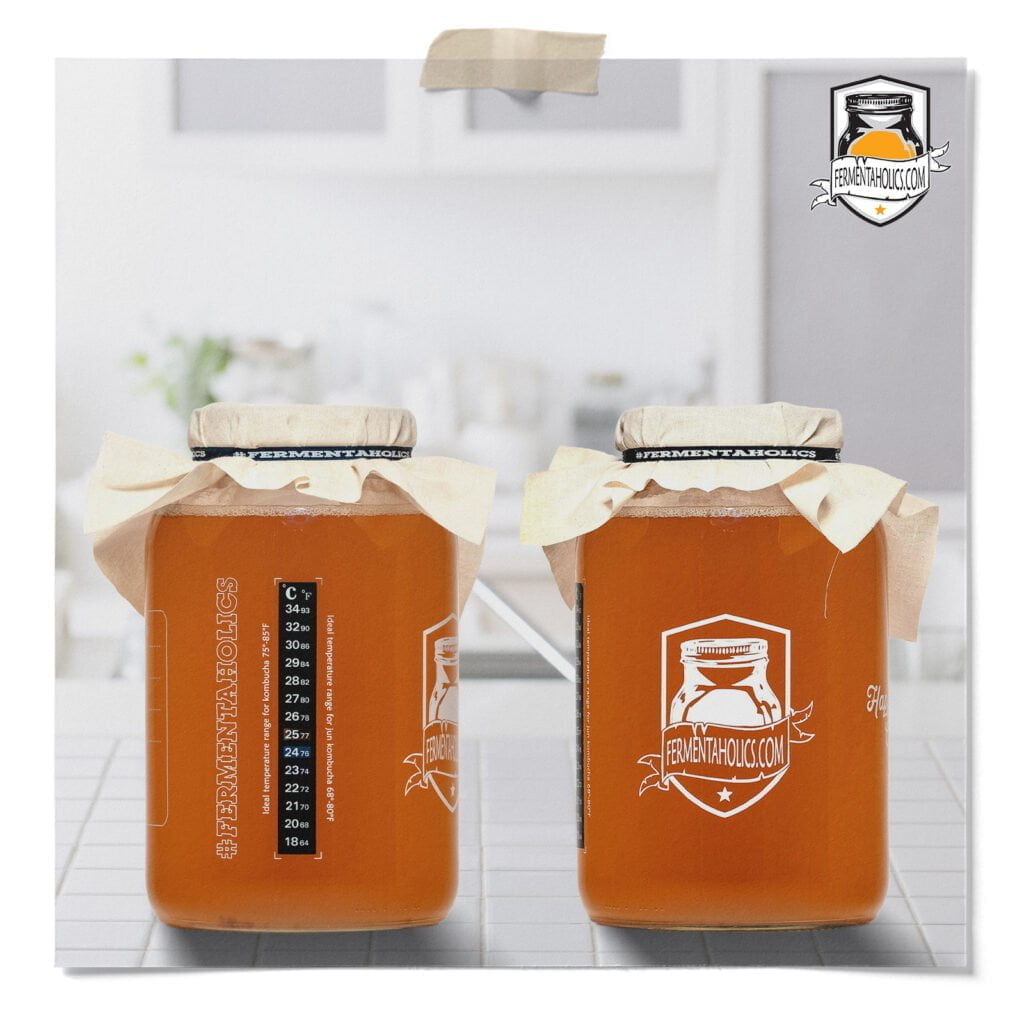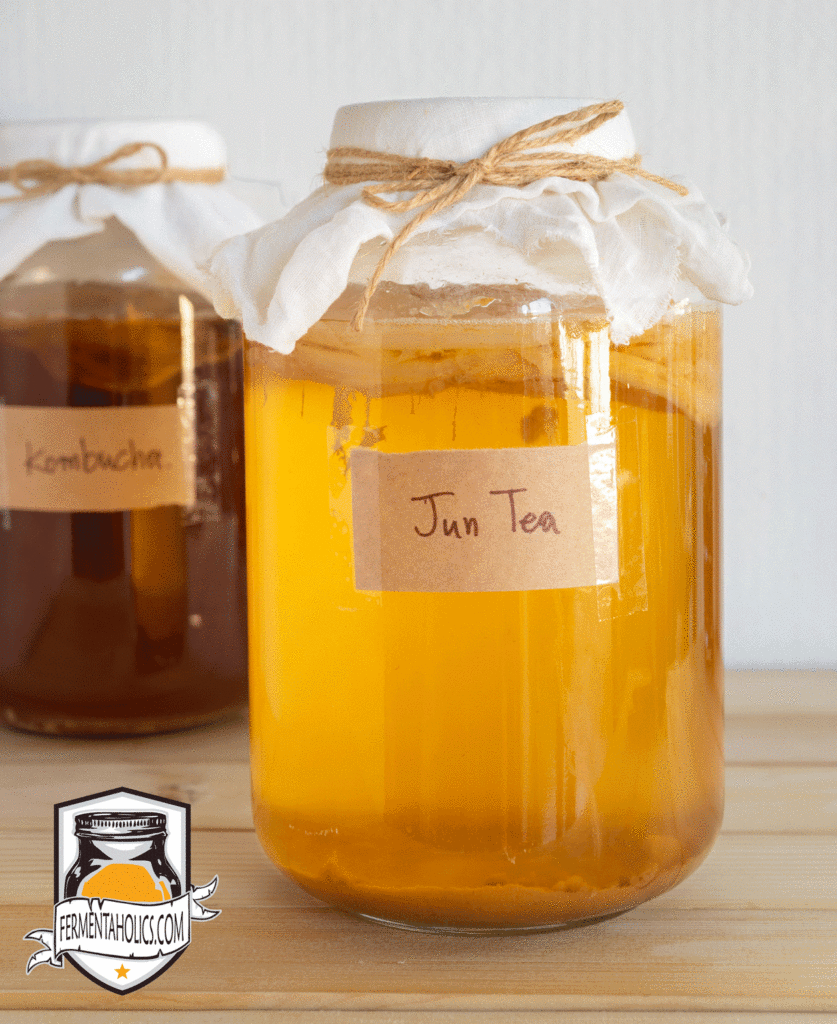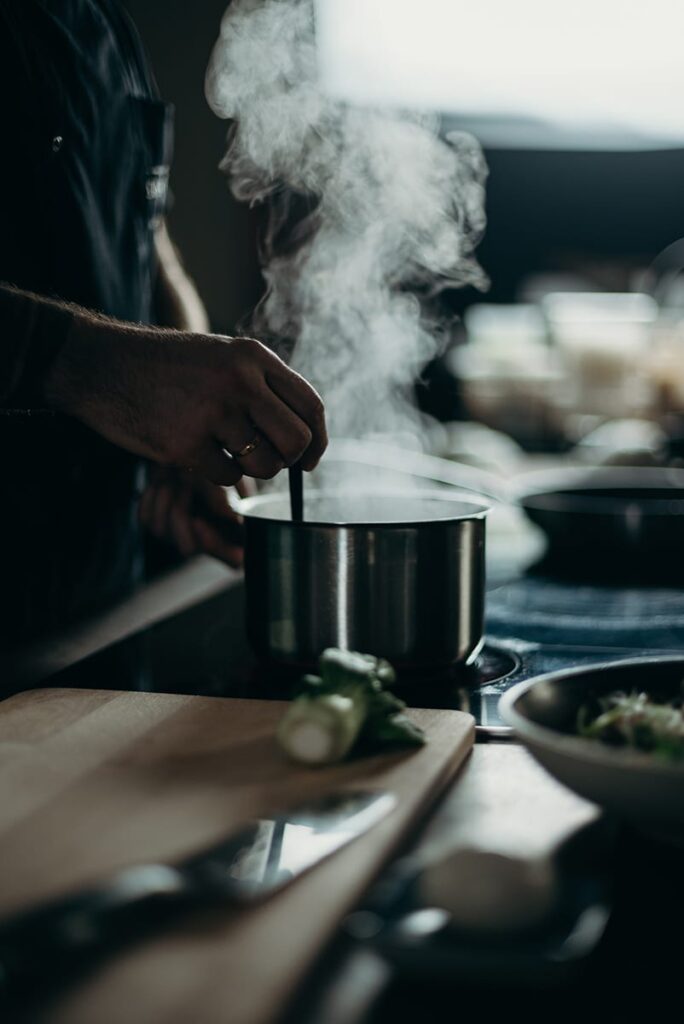
Water is probably the coolest element. It connects us to all other living things. It demands awe and boasts beauty in its ability to carve out our landscape and creates some of the most beautiful places in the world.

Water, it falls from the sky, drains down our polluted roads, past the roadkill and dog poop, and carries all of that lovely stuff with it. For this reason, municipal water sources are chemically treated with chlorine and chloramines to make sure we have a relatively safe water source. Chlorine works as a disinfectant, killing harmful bacteria and viruses that could potentially make their way into your kitchen. While chloramine and chlorine serve their role by providing safe drinking water, when you are making homemade kombucha, you want to avoid them. Not only does it kill off harmful bacteria, but it also does the same to the SCOBYs beneficial bacteria. During the kombucha fermentation, we are trying to encourage microbe growth, not inhibit it, so using dechlorinated water is an important step.
This question comes up daily, “Can I use tap water to brew kombucha?” Or some variation like “Do I need to use filtered water, spring water, mineral water, or distilled water? There is a lot of mixed information available on whether or not you should use tap water at all. So without further ado,
Yes, you can but not straight from the tap unless it’s filtered. Additional steps are required to make tap water suitable for brewing kombucha. This can be as simple as charcoal filtering the water or boiling before use. We will go over various methods so you will be able to determine which best suits you. Bottom line, If you would like to brew kombucha with tap water, you will first need to remove the chlorine or chloramines.
Depending on where you live, your tap water will be different. If you insist on using tap water, the first step is determining what method is used to treat your water. The water treatment for tap water will be either chlorine or chloramine. You can find which way is used by contacting or visiting your utility company’s website.
The reason for the formation of a new SCOBY in the bottle is often due to the extra head space. For example, if you were to fill your swing top bottles halfway with kombucha, your bottle would now be half liquid and half air. The extra air in the bottle is now available as a resource for the culture to draw from, which will help to promote the formation of a SCOBY.
Now, similar to your primary fermentation, the bottles now have an extra but limited supply of air to work with inside the bottle. With additional air space, the likelihood of SCOBY forming inside the bottle increases.

why boil in the first place? The downfall of using the boil method is that you have to boil all the water for the brew. This means you have to wait forever for the water to cool down. If you have room in the fridge, you can put the pot in there for a few hours and try to speed up the process. Or you can boil the water the night before so it will be ready to use the next day, be sure to add the tea and sugar the night before.
You can simply filter it or use the boil method below.

Side Note: San Francisco Water Company has an interesting article on brewing tea and coffee and its effects on neutralizing chloramines and chlorine in the tap water, as does the addition of vitamin C like an orange. While it’s interesting, remember all tap water is a little different, so be sure to take all variables into account when it comes to brewing kombucha, and your strategy on chlorine/chloramine removal.

The quality of water is important for kombucha brewing because it impacts the health of the SCOBY and the taste of the final product.
Tap water can contain chlorine and chloramines, which are harmful to kombucha’s SCOBY. Additionally, tap water may have other contaminants that can impact the taste and quality of kombucha.
Chloramines are disinfectants used in water treatment. They are a concern because they can stay in the water longer than chlorine and are harmful to the SCOBY, negatively affecting kombucha brewing.
To remove chlorine, you can boil the water or let it sit out uncovered for 24 hours. To remove chloramines, you may need to use a carbon filter.
Distilled water can be used for kombucha brewing, but it might lack some minerals that help the kombucha ferment, so it’s not usually recommended.
Yes, filtered water is suitable for kombucha brewing as it usually has chlorine and other contaminants removed.
Yes, mineral water can be used for kombucha brewing. It has beneficial minerals and is free from harmful chemicals.
Well water can be used for kombucha brewing if it is free from contaminants. However, its quality varies and it should be tested regularly.


Looks like you haven't made a choice yet.